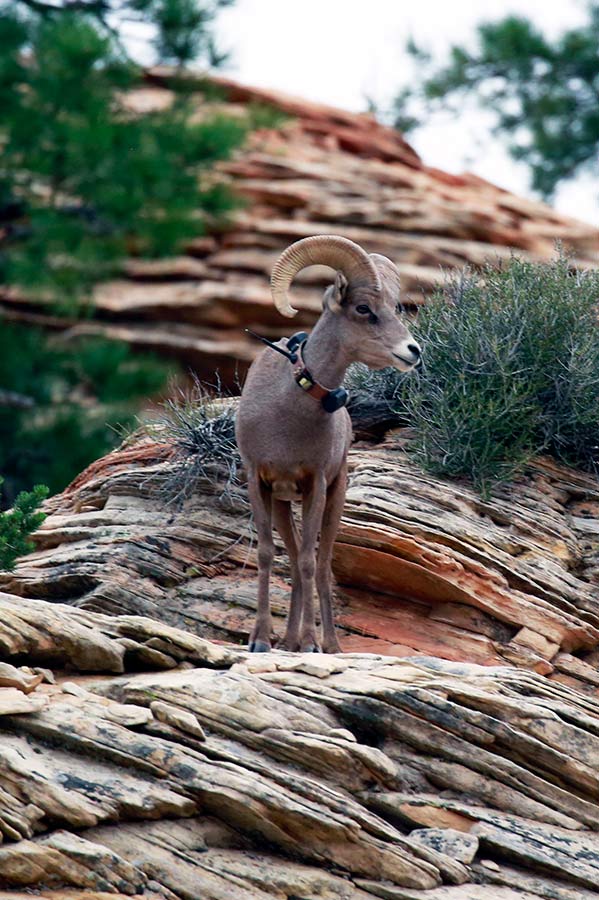Record 1,779 big game animals assessed, GPS collared during winter captures
Salt Lake City — Each year, the Utah Division of Wildlife Resources captures big game animals to perform important health assessments and to place GPS collars on the animals to learn more about their migration patterns and survival rates. This winter, a record 1,779 big game animals were captured, providing important data about big game herds across the state.
The captures typically take place between November and March, when the animals have migrated to lower elevations and are easier to locate. Another reason the captures take place during the winter is because big game animals have a hard time regulating their body temperatures, and the cool weather helps them recover more quickly. The animals are typically caught by a helicopter crew that uses a net gun, and then the animals are later safely released after the health testing.
"When we do capture work, we make a concerted effort to minimize chase times and to keep all capture-related stress to a minimum," DWR Big Game Projects Coordinator Kent Hersey said. "It's a short one-time event for those animaIs and doesn't have the same impacts as repeated disturbances that cause them to use up important fat reserves. The information our biologists get from capturing a relatively small sample of deer provides very valuable data that is used to manage the entire deer population."
The big game animals captured during this research work include deer, elk, moose, bighorn sheep, bison and pronghorn. During the 2023-24 winter, the following animals were captured, assessed and released:
- Bighorn sheep: 209
- Bison: 27
- Deer: 1,153
- Elk: 305
- Moose: 18
- Pronghorn: 67
During captures in November and December, DWR biologists collect crucial data and analyze it. This includes:
- Measuring body fat and overall nutritional condition entering winter
- Sampling and testing for disease
- Estimating survival rates and cause of death for different animals
- Assessing migration patterns and learning the location of critical migration corridors
- Gathering information to better understand limiting factors for population growth
During the captures in March, the following research is conducted:
- Measuring body fat and overall nutritional condition exiting winter
- Checking pregnancy rates in doe deer
- Inserting transmitters into pregnant deer that alert biologists when a fawn is born so researchers can locate the newborn fawn and assess health, survival rates and cause of death (if the fawn doesn't survive)
"We have been conducting these captures and collecting data for the last 10 years in Utah," Hersey said. "We have learned a lot about deer and other big game animals during that time, which in turn, has informed our management decisions. "The amount of body fat a deer has going into winter influences how well they survive the winter. The amount of body fat a female deer has coming out of winter can impact the weight of the fawn at birth and how fast the newborn fawn grows. Those things in turn help the overall population."
During this year's captures, deer across the state were in good nutritional condition, overall. Of the 19 hunting units where deer were captured in December, eight of the units had deer with record high body fat levels. In March, 235 deer were caught on five different hunting units across the state and nearly all of the animals were in good condition. The does that were captured also had a high — 97% — pregnancy rate.
"We use the data from the health assessments — and also the data on where big game animals migrate each summer and winter — to implement habitat projects to improve winter and summer feeding ranges for big game across the state," Hersey said. "These data are also used to determine how and when we hunt animals and to help determine recommended big game permit numbers for each hunt. "
The migration data from the GPS collaring efforts is also used as part of the Utah Wildlife Migration Initiative. This program was founded in 2017 to better track and study the migration patterns of different wildlife and fish species in the state and to help them make those important journeys.
"The GPS collars provide crucial data that informs planning for sustainable land use, transportation, energy, residential and commercial development, recreation and habitat improvement in a variety of areas across the state," DWR Utah Wildlife Migration Initiative Coordinator Makeda Hanson said. "One component of that is incorporating wildlife structures on the landscape to assist wildlife migration. Those structures include overpasses, bridges, culverts and fences."

















